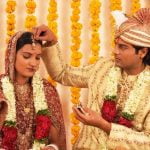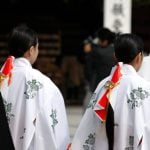Are you planning a wedding and wondering how to properly address wedding invitations? Getting the addresses right is crucial for setting the tone for your big day and showing respect to your guests. Properly addressed invitations also convey the formality of the event and can help avoid any potential confusion.
In this article, we’ll discuss the importance of addressing wedding invitations correctly, as well as provide guidelines and etiquette for addressing both outer and inner envelopes. Whether it’s addressing unmarried or same-sex couples, guests with titles or professional designations, or single guests, we’ve got you covered with tips to ensure your wedding invitations are handled with care.
Addressing wedding invitations is more than just filling in names on envelopes; it sets the stage for what’s to come. The way you address your guests not only reflects the overall formality of the event but also conveys your attention to detail and consideration for your invitees. By following proper etiquette for addressing both outer and inner envelopes, you can create a positive first impression and anticipation for your special day.
Properly addressing outer envelopes involves following a specific format for recipient names, using titles and suffixes respectfully, as well as including the recipient’s full address. Inner envelopes serve an important purpose in detailing who exactly is invited, including family members and children, as well as indicating plus ones for certain guests.
In this article, we’ll cover all these aspects while also providing guidance on handling potential complications such as unmarried or same-sex couples, guests with professional or academic titles, or single guests in relationships.
Addressing the Outer Envelope
Proper Format for Recipient’s Names
When addressing the outer envelope, it’s essential to use proper formatting for the recipient’s names. This includes using full names and titles when appropriate. For married couples, the traditional format is to address them as “Mr. and Mrs. John Smith.” For unmarried couples living together, both names should be listed on separate lines in alphabetical order.
The Use of Titles and Suffixes
Titles and suffixes should also be considered when addressing the outer envelope. If a guest holds a professional or honorific title, it should be included in the address. For example, invitations for military personnel should include their respective ranks. Similarly, if a recipient has a suffix like “Jr.” or “III,” this should be included after their name.
The Inclusion of Recipient’s Address
In addition to properly formatting the recipient’s names, it’s important to include their complete address on the outer envelope. This ensures that the invitation reaches them without any issues. The address should include street name and number, city, state, and zip code.
Following these guidelines for addressing the outer envelope will demonstrate attention to detail and consideration for your guests, setting a positive tone for your wedding from the very beginning. By taking care to properly address each invitation, you are showing respect and gratitude towards your invitees how to properly address wedding invitations throughout this important process.
Addressing the Inner Envelope
The inner envelope of a wedding invitation plays an essential part in properly addressing your guests and setting the tone for your special day. This is the place where you can provide more specific details on who exactly is invited to the event. Here are some guidelines on how to properly address the inner envelope of your wedding invitations.
Purpose of the Inner Envelope
The inner envelope serves as a way to communicate exactly who is invited to your wedding. It allows you to be more specific with your guest list and gives you an opportunity to address family members, children, and plus ones in a clear and respectful manner.
How to Properly Address Family Members and Children
When addressing families on the inner envelope, it’s important to list each family member by their title and last name. For example, “Mr. and Mrs. Smith” or “Dr. and Mrs. Johnson.” If children are also invited, their names should be included below those of their parents; for example, “Miss Emily Smith” or “Master James Johnson”.
Etiquette for Addressing Guests With Plus Ones
For guests who are allowed a plus one, it’s important to properly address both individuals on the inner envelope. Include the name of your main guest followed by “and Guest” if you do not know the name of their plus one, such as “Ms. Sarah Taylor and Guest.” This shows respect for their relationship status while still keeping your guest list organized.
By following these guidelines for addressing the inner envelope of your wedding invitations, you can ensure that every guest feels properly recognized and welcomed to your special day. Remember that attention to detail in this area sets the tone for a well-planned event where all attendees feel valued and respected.
Dealing With Unmarried or Same-Sex Couples
When it comes to addressing wedding invitations, it’s crucial to be mindful and respectful of all your guests, including unmarried or same-sex couples. Following proper etiquette for addressing these individuals not only shows consideration but also sets a tone of inclusivity for your wedding. Whether you are addressing unmarried couples or same-sex couples, there are important guidelines to keep in mind.
For unmarried couples, it is customary to list each person’s name separately on the outer envelope. This means that the names of both individuals should be written out in full, with their titles and last names. However, if the couple is living together or in a long-term committed relationship, they can be addressed as “Mr. John Smith and Ms. Jane Doe”.
When it comes to addressing same-sex couples, the etiquette is essentially the same as with heterosexual couples. Both individuals’ names should be listed on the outer envelope with their titles and last names. For example, “Mrs. Samantha Johnson and Mrs. Emily Davis” or “Mr. Christopher Harris and Mr. Thomas Robinson.” In instances where one partner uses a different last name, it is vital to respect their preference by using their chosen name.
Inclusive language is essential when addressing all guests, regardless of their marital status or sexual orientation. It demonstrates sensitivity and consideration towards your friends and family members who may come from diverse backgrounds.
| Guidelines for Addressing Unmarried Couples | Proper Etiquette for Same-Sex Couples |
|---|---|
| List each person’s name separately on the outer envelope | List both individuals’ names on the outer envelope with titles and last names |
| Use “Mr.” and “Ms.” followed by full names unless they share a residence | Respect individual preferences for last names; use chosen name if applicable |
Addressing Guests With Titles or Professional Designations
When it comes to addressing wedding invitations, it is crucial to pay attention to the titles and professional designations of your guests. Properly addressing guests with their appropriate titles not only shows respect, but it also reflects the formality and tone of the wedding. Whether your guest holds a military title, a professional designation, or an academic honor, there are certain etiquettes to follow to ensure that each invitation is properly addressed.
For guests with military titles, it is important to include their rank and branch of service on the outer envelope. For example, if one of your invited guests holds the rank of Captain in the Navy, the proper way to address the outer envelope would be “Captain John Smith” followed by his full address.
When addressing guests with professional or academic titles such as doctors, judges, or professors, it is essential to use their appropriate title on both the inner and outer envelopes. For example, if inviting a doctor named Sarah Johnson, the correct format would be “Dr. Sarah Johnson” on the outer envelope and “Dr. Johnson” on the inner envelope along with her family members’ names.
Another important aspect of addressing wedding invitations is ensuring that all of your guests feel included and respected. When addressing same-sex couples or unmarried couples who live together, it is essential to use inclusive language that accurately reflects their relationship status. For unmarried couples living together, list both names alphabetically on separate lines without using “and.” Similarly for same-sex couples, follow similar guidelines when addressing them by placing their names alphabetically without indicating gender in any way.
Handling Invitations for Single Guests
When it comes to the proper etiquette for addressing wedding invitations, it’s essential to consider the specific scenario of single guests. Whether they are attending alone or with a plus one, addressing their invitations correctly sets the tone for a thoughtful and courteous wedding experience.
For single guests, it’s important to address their invitations using the proper format. When sending a wedding invitation to a single guest, use “Ms.” or “Mr.” followed by their full name. If they will be bringing a plus one, indicate this on the inner envelope by adding “and Guest” after their name. This ensures that they understand they have the option to bring someone with them and makes them feel valued as an individual.
In cases where single guests are in relationships but not living together or married, it’s crucial to extend an invitation to their partner by including their name on the inner envelope. This thoughtful inclusion shows that you recognize and respect their relationship, making them feel welcomed and appreciated as part of your celebration.
By properly addressing invitations for single guests, you set the stage for a warm and inclusive wedding atmosphere that prioritizes attention to detail and consideration for all attendees.
Importance of Double-Checking
Addressing wedding invitations is an important aspect of wedding planning that can set the tone for the event. Properly addressing the outer and inner envelopes, dealing with unmarried or same-sex couples, handling single guests, and addressing guests with titles or professional designations all require careful attention to detail. However, one crucial step in this process is often overlooked: double-checking the addresses before sending out the invitations.
Double-checking is essential in ensuring that all the information on the invitation is accurate. This includes not only verifying the correct names and titles for each recipient but also making sure that their addresses are correct. Addressing errors can lead to delayed or undelivered invitations, causing unnecessary stress and frustration for both the couple and their guests.
To avoid common addressing mistakes and ensure that each guest receives their invitation in a timely manner, it is recommended to review and proofread all addresses thoroughly. This extra effort can help prevent any potential mishaps and uphold the overall impression of attention to detail in wedding planning.
Conclusion
In conclusion, properly addressing wedding invitations is a crucial aspect of wedding planning that should not be overlooked. The way in which invitations are addressed sets the tone for the event and shows respect to the guests. It reflects the care and attention to detail that the couple is putting into their special day, creating an elegant and cohesive feel right from the start.
To ensure that invitations are properly addressed, it’s important to carefully follow etiquette guidelines for both outer and inner envelopes. This includes using appropriate titles and suffixes, addressing unmarried or same-sex couples respectfully, acknowledging professional designations, and handling invitations for single guests with tact. Double-checking addresses and avoiding common mistakes is also crucial in ensuring that every guest feels valued and included.
In the end, proper addressing of wedding invitations contributes to a more organized and harmonious event overall. By paying attention to these details, couples can convey their appreciation for their loved ones while creating a warm and welcoming atmosphere for all attendees. This consideration adds a thoughtful touch to the wedding planning process, which will surely be appreciated by guests as they look forward to celebrating this special day with the couple.
Frequently Asked Questions
What Is Proper Etiquette for Addressing Wedding Invitations?
Proper etiquette for addressing wedding invitations involves using formal titles such as Mr., Mrs., or Dr. when addressing the recipients. It’s important to include both the names of the individuals invited, along with their mailing address.
How Do You Address a Wedding Invitation to Mr and Mrs?
When addressing a wedding invitation to a married couple, it’s appropriate to use “Mr. and Mrs. John Smith” for a traditional approach. However, if you prefer a more modern and egalitarian option, you can use “Mr. John Smith and Mrs. Jane Smith” to acknowledge both individuals as separate entities.
What Is the Proper Way to Address a Wedding Card?
The proper way to address a wedding card is by using the couple’s preferred title or honorifics, followed by their full names (including middle names if known). It’s also thoughtful to include a personalized message expressing your well wishes for their marriage and future together.

Welcome to my blog about home and family. This blog is a place where I will share my thoughts, ideas, and experiences related to these important topics. I am a stay-at-home mom with two young children. I hope you enjoy reading it! and may find some helpful tips and ideas that will make your home and family life even better!





